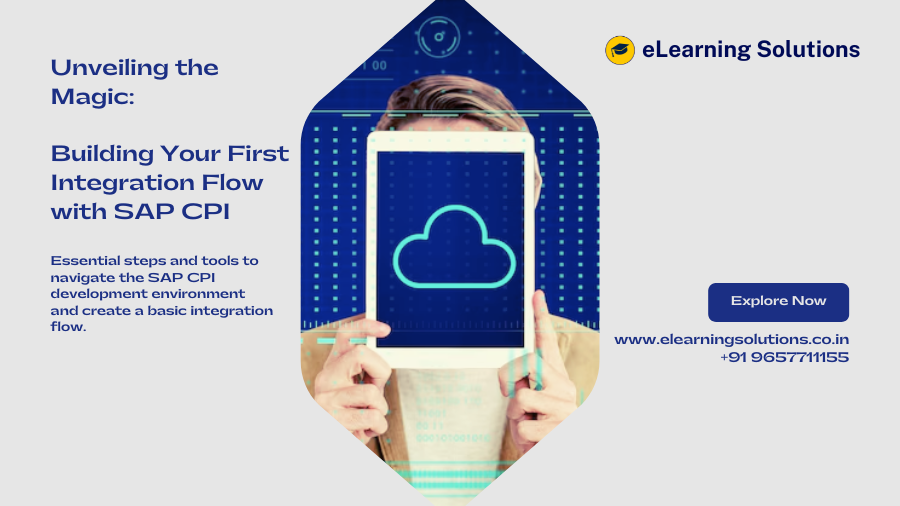In part one, we explored the captivating world of SAP Cloud Integration (CPI) and its ability to streamline data exchange between applications. Now, buckle up as we delve into the practical side of things – building your first integration flow with SAP CPI! This blog equips you with the essential steps and tools to navigate the SAP CPI development environment and create a basic integration flow.
Welcome to the Hub: Introduction to the SAP Cloud Integration Development Environment
The SAP CPI development environment is your command center for crafting integration flows. Here’s a quick rundown of key elements:
- Integration Packages: These serve as containers for organizing your integration flows. Imagine them as folders for all your integration creations.
- Integration Flows: These are the heart of your work, visually depicting the message processing steps that connect applications. Think of them as pipelines that move data between systems.
- Adapters: These act as bridges, enabling communication between SAP CPI and various applications and data sources. They translate data formats and protocols to ensure seamless communication.
- Content: Pre-built configurations and mappings can be leveraged to save time and effort. Think of them as pre-made building blocks to accelerate your development process.
Step-by-Step: Constructing Your First Integration Flow
Now, let’s build a basic integration flow that retrieves data from a simple file and sends it to an SAP system:
- Create an Integration Package: Log in to the SAP CPI development environment and create a new integration package. This will be the home for your first integration flow.
- Design Your Flow: Within the package, choose “Create” and select “Integration Flow”. A visual editor opens, where you can drag and drop elements to build your flow.
- Connect the Sender: Start by dragging a “File” adapter from the adapter palette. Configure this sender to specify the location and format of the data file you want to read.
- Define the Message Mapping: Data formats might differ between the file and the SAP system. Drag a “Message Mapping” element and configure it to transform the data from the file format to the format expected by the SAP system.
- Connect the Receiver: The final step involves dragging an “SAP Adapter” and configuring it to connect to your specific SAP system and destination. This defines where the transformed data will be sent.
- Activate and Test: Once you’ve connected all the elements, activate your integration flow. Test it by triggering a message flow (uploading a new file) and monitor the results to ensure data is processed and delivered successfully.
Power Up Your Development: Utilizing Pre-Built Content
Building from scratch is great, but SAP CPI offers a treasure trove of pre-built content to accelerate your development:
- Integration Content Packages: These pre-configured content packages provide templates and mappings for common integration scenarios, saving you time and effort.
- Artifacts: Reusable artifacts like message mappings and operations can be leveraged across multiple integration flows, promoting efficiency.
Ensuring Success: Testing and Deployment
Before unleashing your integration flow into the wild, thorough testing is crucial:
- Test Data: Utilize various test data scenarios to ensure your flow handles different data formats and edge cases effectively.
- Monitoring: Monitor the flow’s execution to identify any errors or exceptions that might arise during processing.
Once testing is complete, you can deploy your integration flow, making it live and ready to automate data exchange between your applications.
Conclusion: A World of Integrations Awaits
Building your first integration flow with SAP CPI is just the beginning of an exciting journey. With the knowledge gained in this blog, you possess the foundation to explore the vast potential of SAP CPI. Remember, practice makes perfect, so experiment with different integration scenarios and leverage pre-built content to streamline your development process. As you delve deeper, you’ll unlock the power of SAP CPI to create a seamless and automated integration landscape for your enterprise.



 WhatsApp us
WhatsApp us